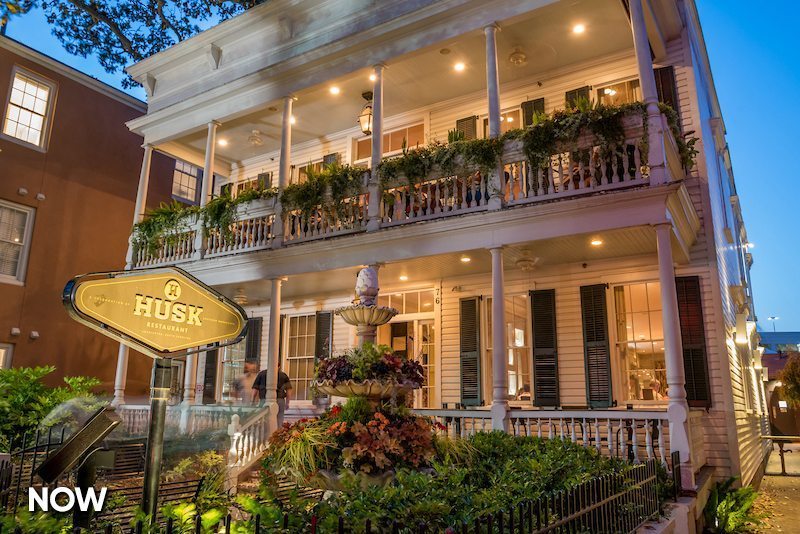Experience Southern Cuisine at the Husk Restaurant in Charleston, SC
In a city flush with good food, Charleston’s Husk stands out by offering Southern cuisine with a modern sensibility.
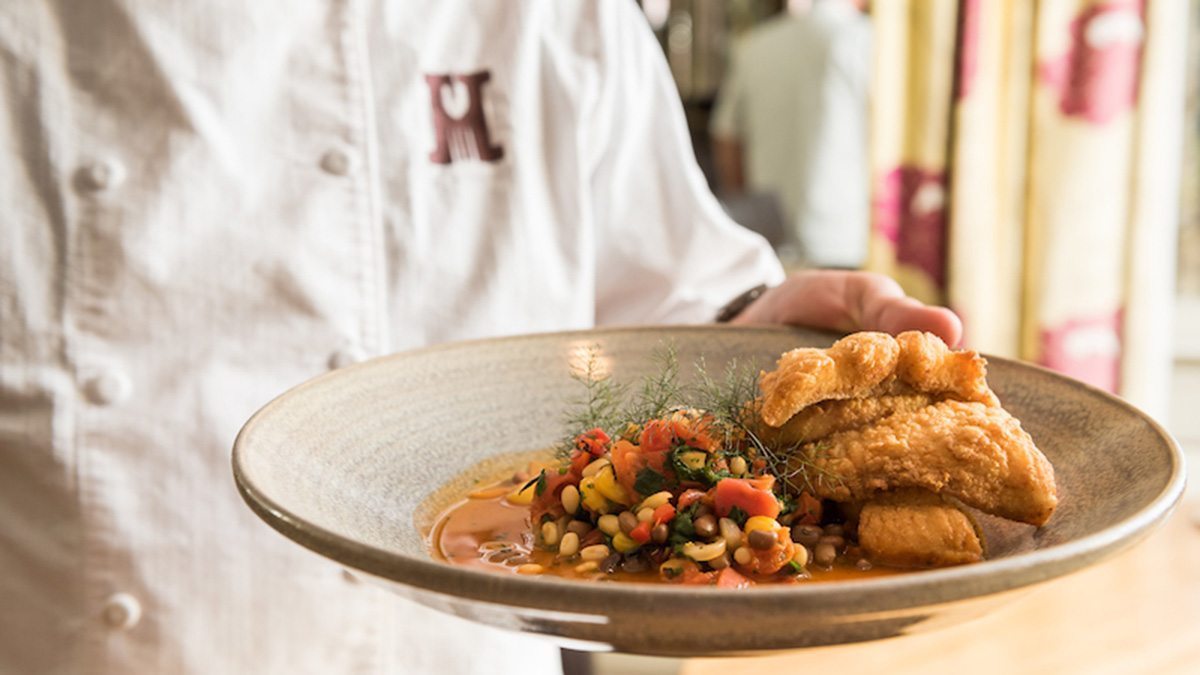
You feel it in that delicious moment you enter the 19th-century mansion that houses one of Charleston, South Carolina’s, most talked-about restaurants. In the airy, sun-dappled dining room of AAA Three Diamond Husk, honey-hued plank floors and jewel-colored jars of homemade preserves flank spare jolts of modern art—and not a stuffy white tablecloth in sight. There’s something different going on here. This is a place that reveres and reclaims the South’s culinary past while celebrating the possibilities of the present.
Early on, Sean Brock—Husk’s founding chef—made a public and now-famous pledge to serve only ingredients from the South, a seemingly impossible promise he has kept. At Husk you’ll be dining, as Charleston’s forebears did, on fare that echoes the natural growing seasons, the ebb and flow of the marshes and ocean, the life cycle of the earth. (Unlike Charleston’s forebears, you’ll be doing this preferably after a day of sightseeing, starting your evening with pre-dinner drinks on the piazza, as the sounds of this bustling port city fade away and the heady scent of magnolia sweetens the air.)
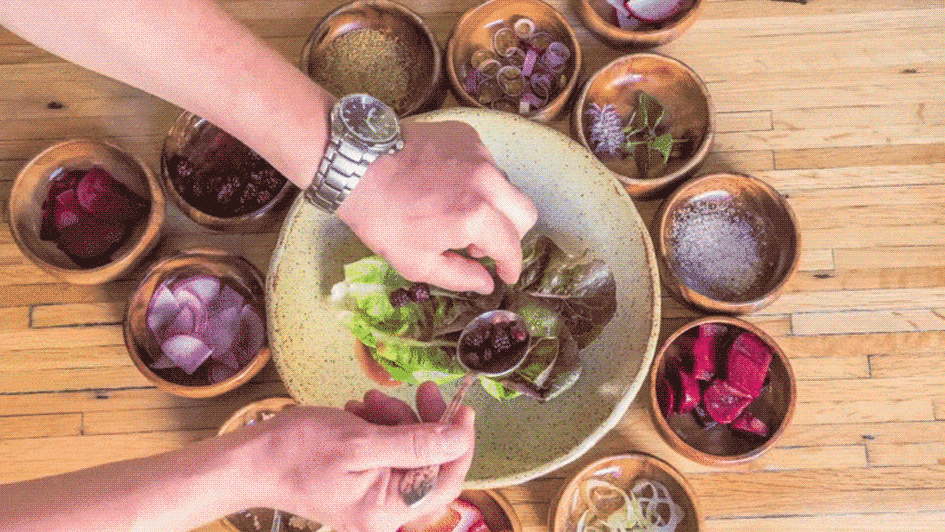
In summer, the menu might feature Atlantic snapper with butternut squash, roasted peach, South Carolina chanterelles and heirloom kale. Winter might bring North Carolina chicken with wood-fired brussels sprouts and Carolina mountain apples, or a coffee-rubbed Tennessee strip steak with embered brassicas (a historic technique for cooking vegetables in a fire).
Whatever your choice, your taste buds likely will jolt you into an epiphany: This is what real food tastes like … bright and elemental, kissed with wood smoke and fresh herbs just pulled from the garden—rich and complex but, ultimately, so simple that you’ll wonder: Have I ever had a tomato before? When’s the last time I tasted truly fresh fish?
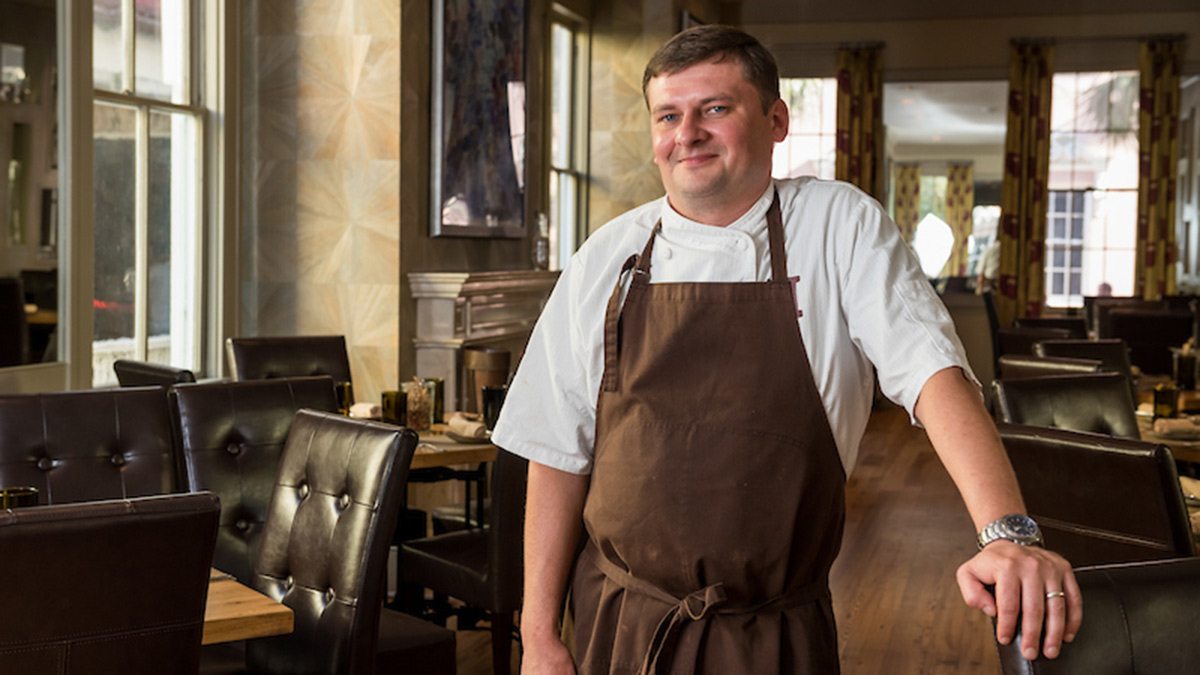
From hot sauces to sarsaparilla, Husk Executive Chef Travis Grimes has a passion for local culinary traditions.
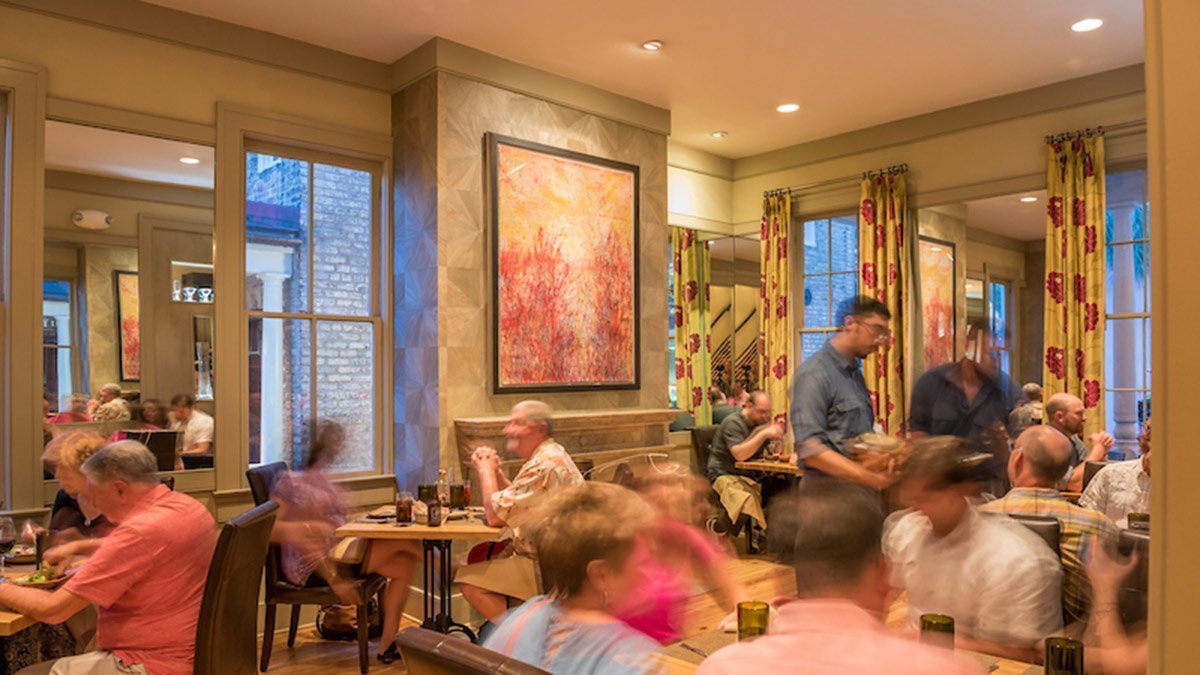
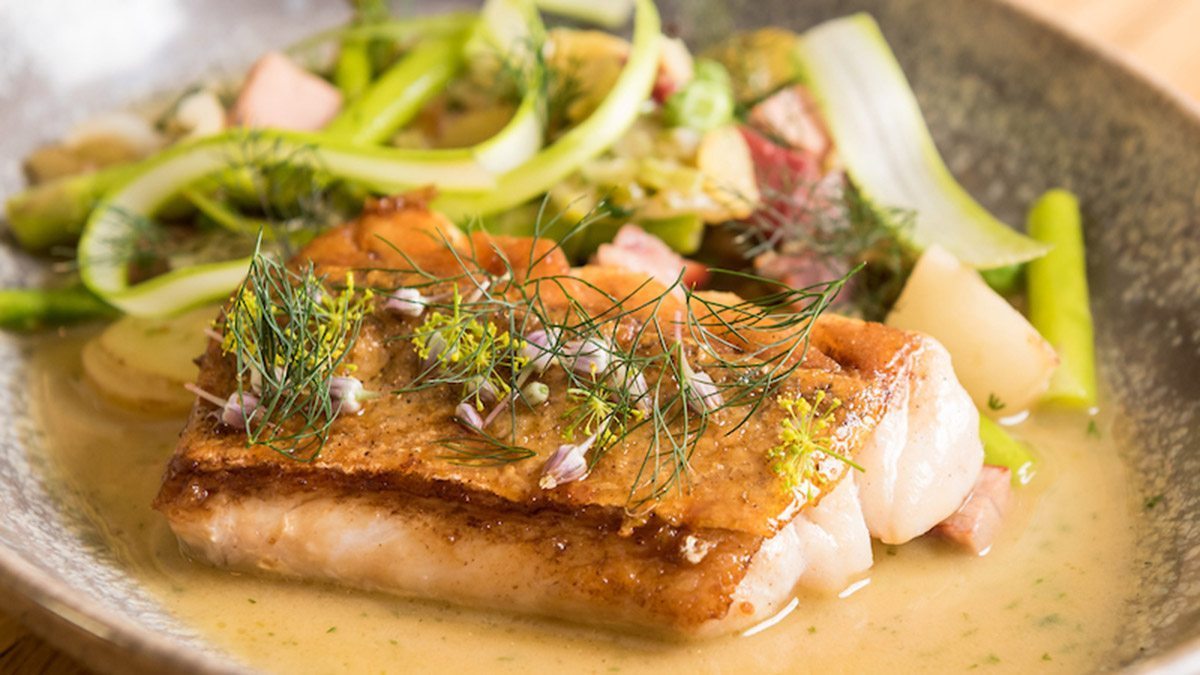
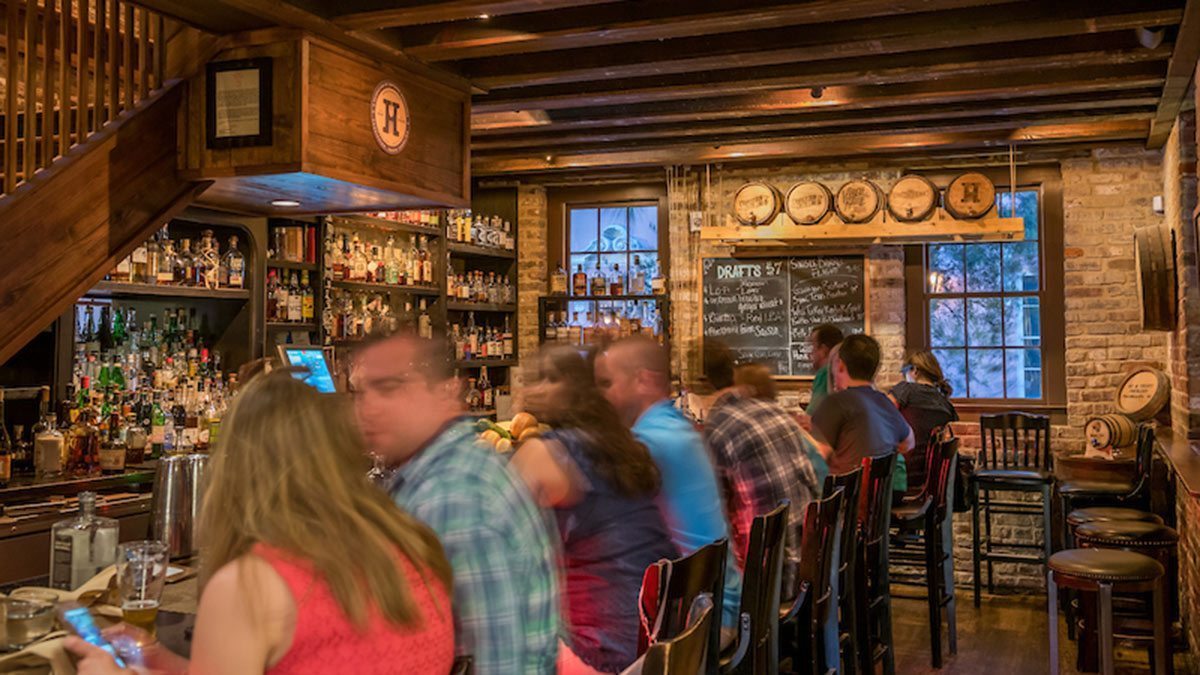
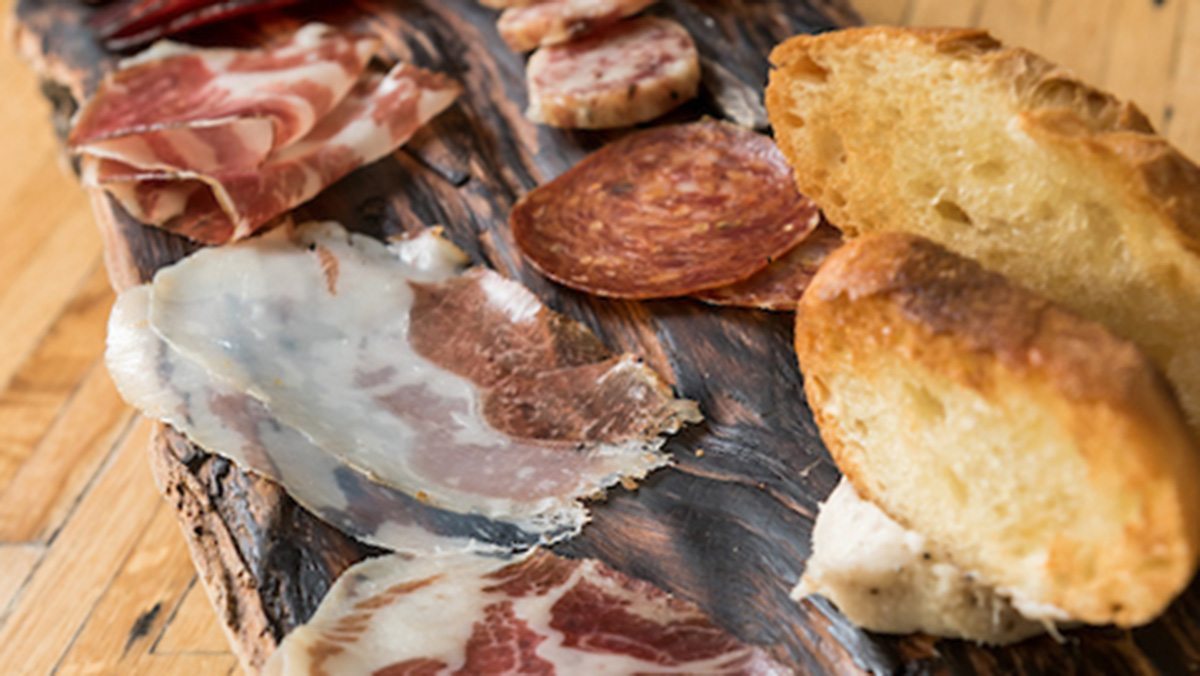
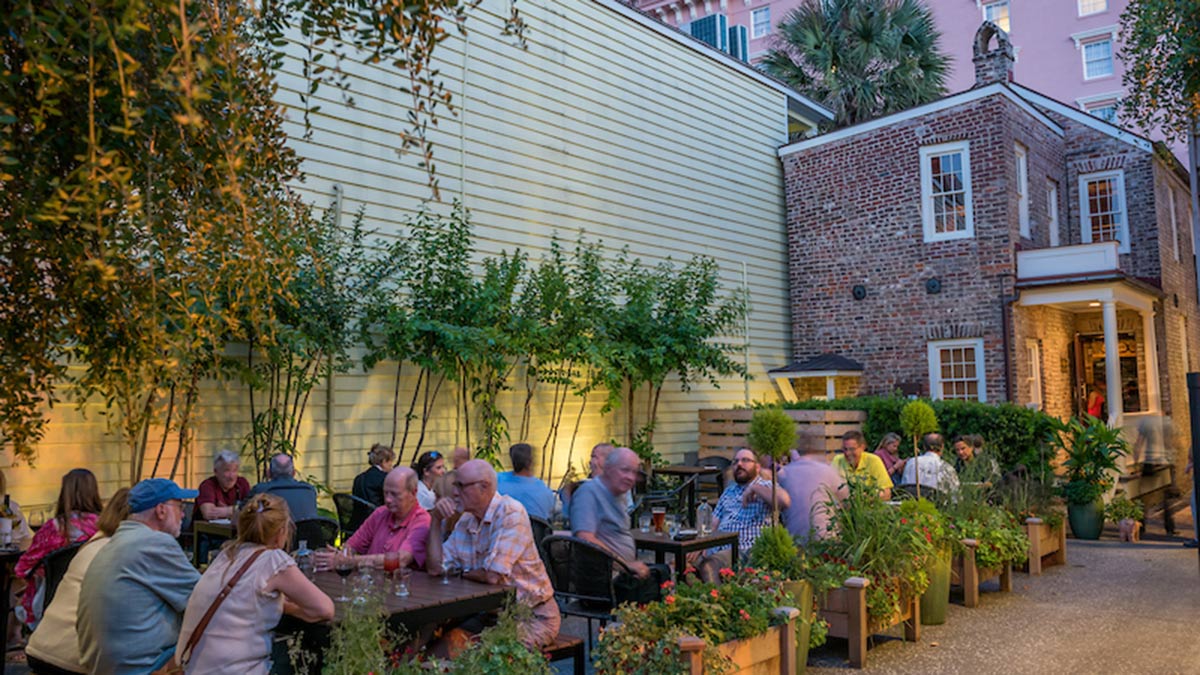
And, yes, Husk serves up the classics, too: country ham and deviled eggs, cornbread (recipe below), catfish and collards—with old-fashioned rice pudding, stack cake and fruit cobblers for dessert. Just don’t expect that they’ll mimic the dishes of yore. Husk’s versions are created for a new palate. “We do a lot of research and study antique recipes and techniques, but then we bring that knowledge into the modern age,” says Travis Grimes, the Lowcountry native who serves as the kitchen’s executive chef.
Husk is my first choice for perfectly prepared upscale local cuisine. The award-winning chef’s talents never cease to surprise my taste buds.”— AAA Diamond Inspector
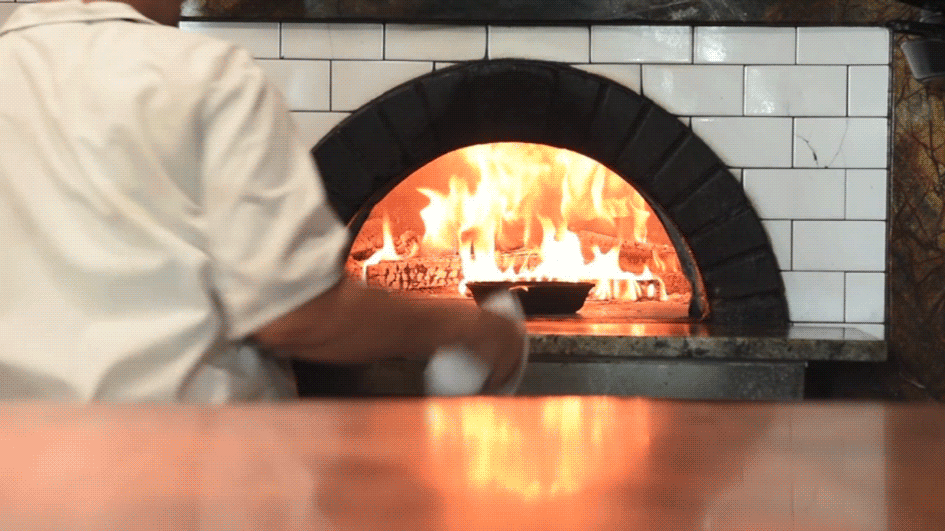
It’s all about the ingredients. Just ask Chef Grimes.
“Everyone has had grits at least once in their life from some restaurant—probably instant grits,” he says. “They have no flavor, and they’re just terrible.” At Husk, the grits are made from Jimmy Red Corn, a once-obscure cob that produces speckled grits with a big, rich flavor and hints of lavender and chestnut.
Greg Johnsman of Geechie Boy Mill, on nearby Edisto Island, began recultivating the variety for Husk when it was just starting out, in 2011. “Now it’s readily available, but back then,” Grimes says, “I think we had the largest supply of Jimmy Red Corn seed in the world.”
It’s that dedication to sourcing the best, most local ingredients possible that defines Husk. Rather than a trailer truck that chugs up to the back door on schedule each week, Husk’s ingredients are likely to come in the bed of a pickup truck, “from a 25-year-old who has two acres of land growing cool stuff,” Grimes says. He likes to meet his ingredients in person before he lets them into his kitchen—the same hands-on way he has met and cultivated a strong bond with his growers and producers.
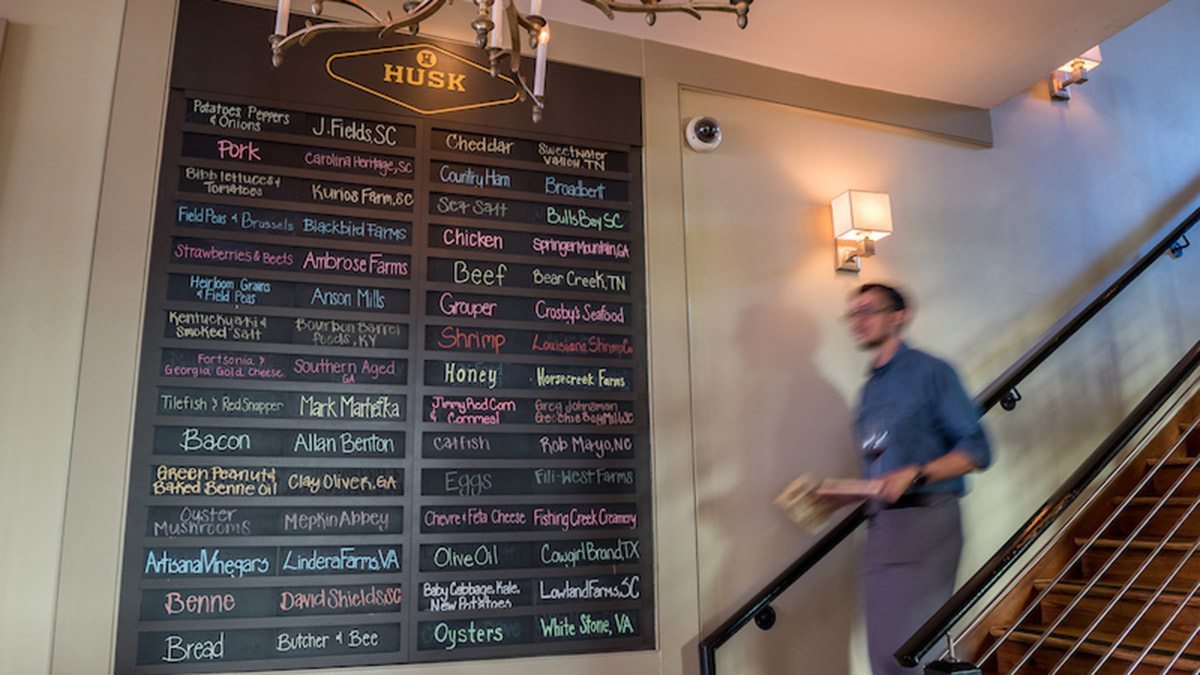
A chalkboard in the dining room displays the source of every local ingredient on the day’s menu.
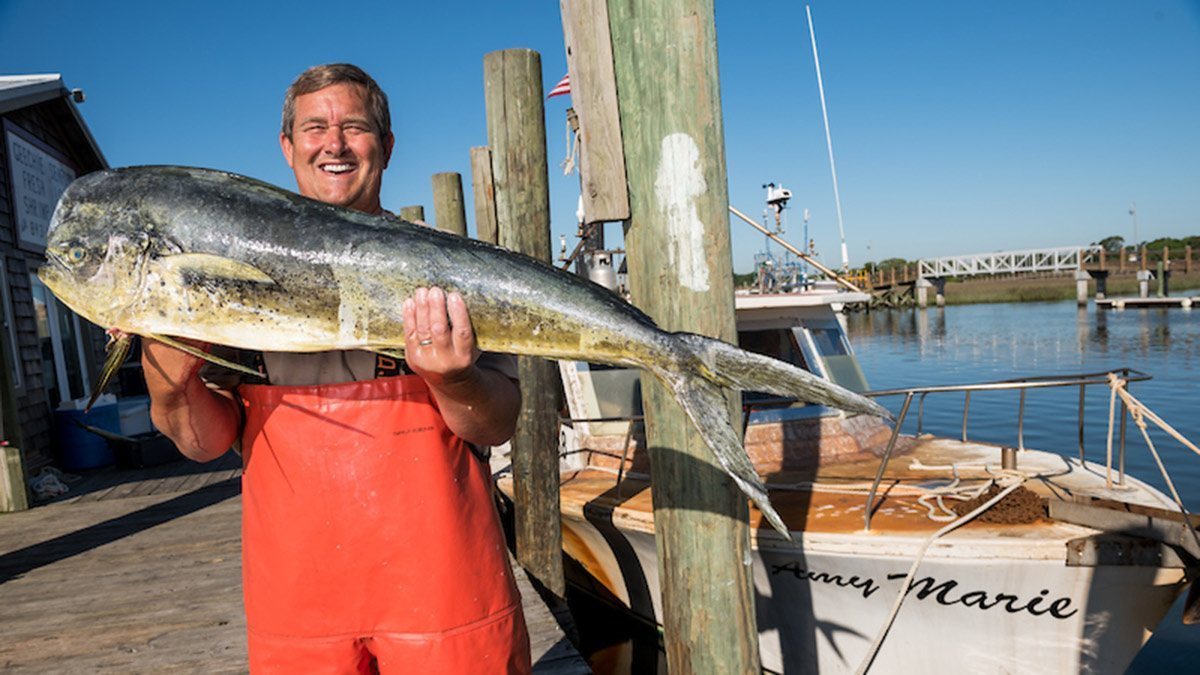
Mark Marhefka provides Husk with local, sustainably caught fish.
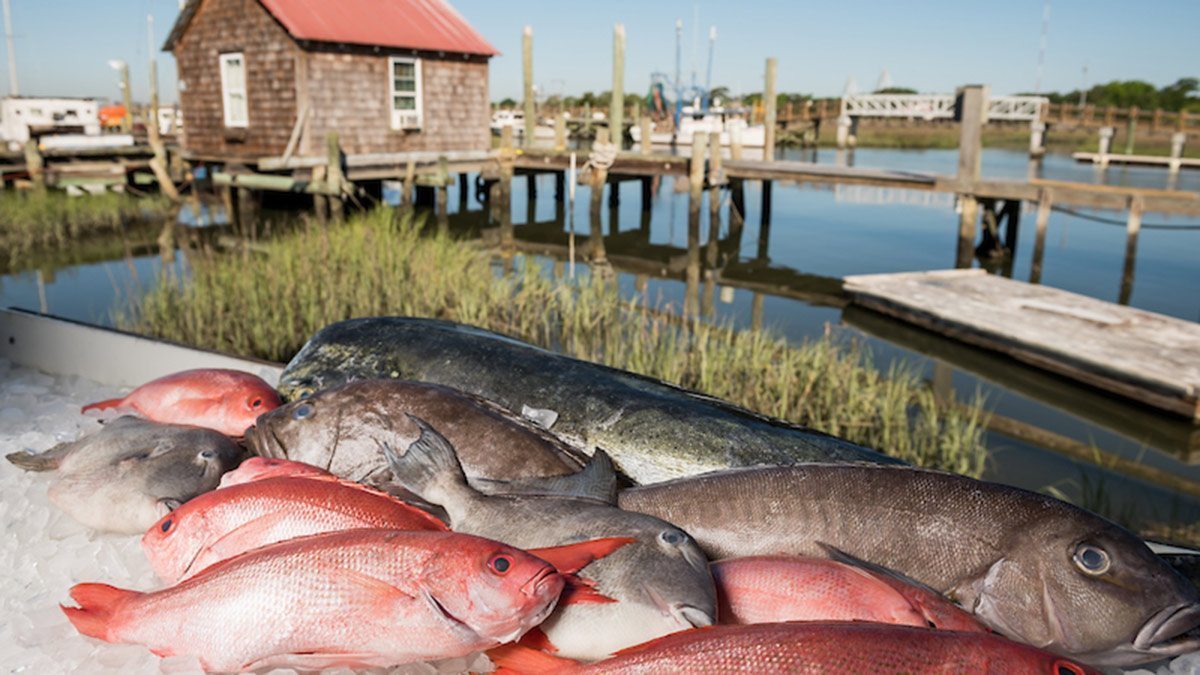
The menu is dictated by the fish caught every day—not the other way around.
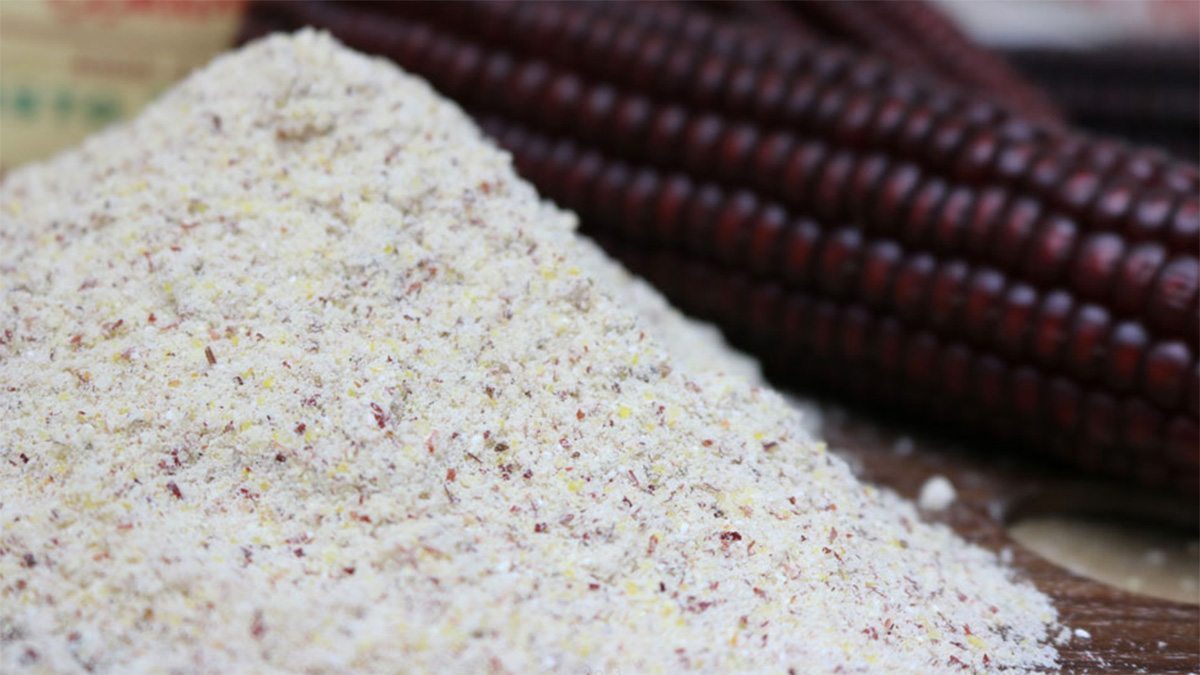
A cob once on the verge of extinction, Jimmy Red Corn gives Husk’s grits their bold flavor.
Their names and what they’ve contributed to the day’s menus are always noted on a chalkboard near Husk’s front door: Mark Marhefka, who brings in line-caught, sustainable snapper and amberjack from Shem Creek outside the city (where he also runs a community-sustained fishery); Clammer Dave Belanger, who’s become famous for his perfect Caper’s Inlet Blades oysters, which he farms himself in the Lowcountry’s subtidal salt marshes; even a bean-to-bar chocolatier from Nashville, Scott Witherow.
“It’s a symbiotic relationship,” Grimes says. “The farmers are supporting us and our philosophy, and how we cook food here.”
You can dine at Husk on a Tuesday and return on Sunday to find a completely different menu—created using the best, freshest ingredients at hand. Husk even serves the ubiquitous loquat, a fruit in the peach family that clusters in trees throughout Charleston. “We call it urban foraging,” Grimes says. “We go out and ask people if we can go in their backyards.” He served much of a recent batch of loquats fresh, on salad, and made fruit syrup and preserves with the rest.
Husk’s hallowed sense of value and respect for the South’s bounty carries over to the diner’s experience, too. Unlike many upscale spots of its stature, Husk feels more like going to a casually elegant dinner party than a stuffy museum where you’re afraid to touch the art. From chef to staff, the attitude at Husk is that they’re inviting you into their home, treating you with Southern hospitality. Adds Grimes with a laugh, “I’m going to feed you as much as you can eat, and I’m going to send you home with leftovers.”
Like the city itself, Husk says: Welcome! Come in. Glad you’re here. What can I get you?
How charming.
How Charleston.
Husk | 76 Queen Street, Charleston, SC 29401 | huskrestaurant.com
Find AAA Diamond restaurants and hotels at home and on your next adventure.
Read MoreBring AAA Diamond delights home:
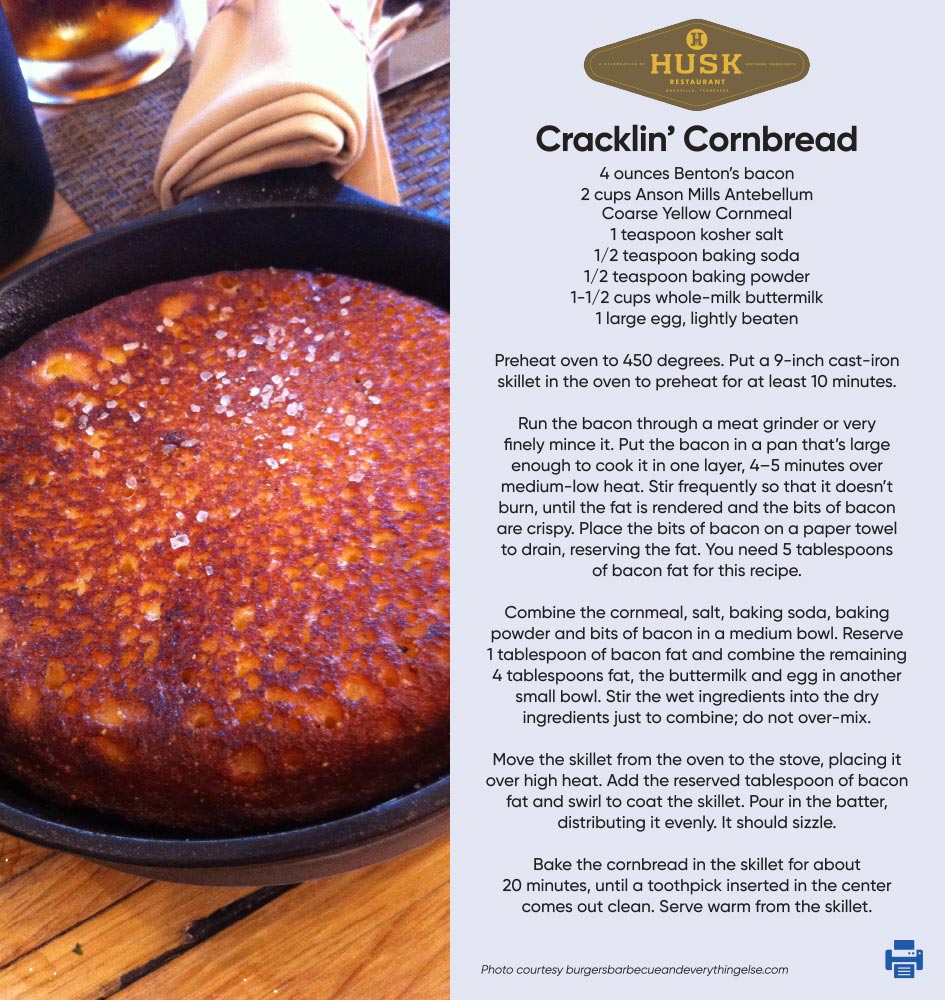
Photos by C2 Photography except Jimmy Red Corn by Geechie Boy Mill and historic photo of Husk building by Margaretta Childs Archives at Historic Charleston Foundation.

